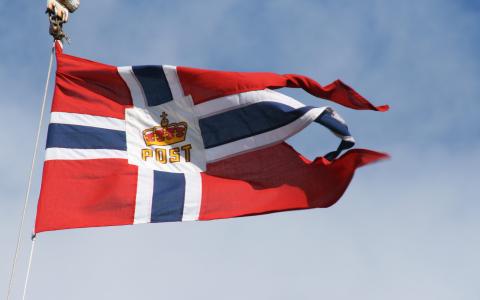
(Bloomberg) - Norway’s $1.3 trillion sovereign wealth fund, the world’s biggest, posted its first quarterly loss since 2020 after Russia’s invasion of Ukraine and lockdowns in China roiled markets.
The Oslo-based fund lost $74 billion in the first quarter, a 4.9% decline, according to a statement on Thursday.
The world’s biggest owner of publicly traded companies faced a worsening outlook already before Russia’s full-scale invasion of Ukraine dented the global markets. The fund, which returned 14.5% last year, is “still down but not much” so far this quarter, Deputy Chief Executive Officer Trond Grande said, adding uncertainty has increased “significantly through what has happened in Ukraine.”
“There are many who think of this as a very fundamental shift, in European politics in particular, but also in world politics,” Grande said in an interview after the report. “The fact that the stock market does not react more to such uncertainty seems to us to be a little surprising, without there being any clear explanation for it.”
Chief Executive Nicolai Tangen warned in January that the fund’s growth over the past 25 years isn’t likely to continue, with interest rates then at record lows, equity markets at all-time highs and inflation seen remaining “high for a long time.”
The fund said its unlisted real-estate holdings gained 4.1%, though they account for less than 3% of the total allocation.
Norway decided on Feb. 27 to drop Russian assets from the fund in response to the country’s invasion of Ukraine, but ran into problems with actually implementing the decision after Russia banned foreigners from executing trades on its stock markets.
Norges Bank has said that it will return with a recommendation on lifting a freeze on the fund’s investments in the country once its markets are functioning more normally, along with more detailed recommendations on carrying out the sale.
The fund’s Russian assets were valued at 2.9 billion kroner ($330 million) at the end of the quarter, down from 27 billion kroner at the end of last year, it said on Thursday.
Created in the 1990s to invest Norway’s oil and gas revenues abroad, the fund has a portfolio of about 9,000 stocks, and delved into renewable infrastructure for the first time last year.
Overall, the fund’s total return was 0.66 percentage points higher than that of the benchmark against which it measures itself.
(A previous version of this story corrected return versus benchmark in final paragraph.)
(Updates with deputy CEO comments from third paragraph.)
Lars Erik Taraldsen and Stephen Treloar



